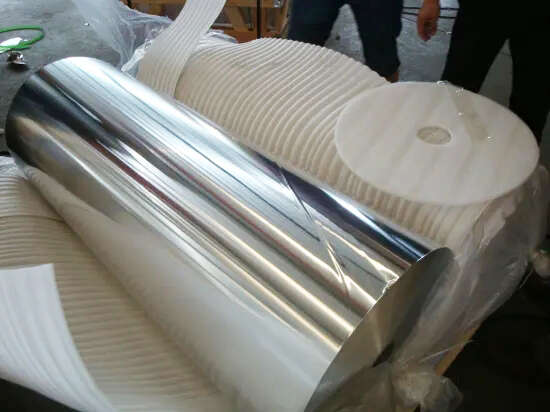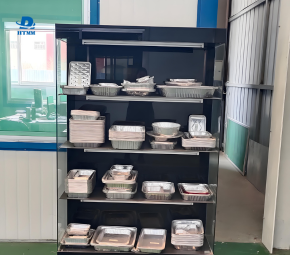The first step: smelting: using a large-capacity regenerative melting furnace to convert the original aluminum into aluminum liquid, and enter the casting mill through the launder. During the flow of the aluminum liquid, the refining agent Al-Ti-B is added on-line to form a continuous effect; graphite The rotor is degassed online at 730-735℃, and the slag is removed to form a continuous and uniform cleaning effect.
The second step: rough rolling: the aluminum liquid after the first smelting is introduced into a casting mill to be cast into a billet. In this process, the temperature of the cooling water inlet of the roller body cavity is controlled at 20-23℃, the water supply temperature is controlled at 28-32℃, and the static pressure of the aluminum melt between the roll gaps is controlled at 0.004-0.005Mpa to ensure the crystal orientation of the material. (100) The face ratio is greater than 95%, the grain size is less than or equal to 5 um, and the slab is 6.5-7.5 mm de slab.The third step: intermediate rolling: the slab is re-rolled by a cold rolling mill to a thickness of 4.5 mm, which is fed into an annealing furnace, heated to 360 ℃, and after 2 hours of heat preservation, heating is continued to 580 ℃, and the heat is kept. 18 hours, homogenization annealing, uniform grain size, uniformity of direction, and then continue to cold rolling in the cold rolling mill to 0.6mm, again sent to the annealing furnace, heated to 460℃, after 5 hours of insulation, cooling Up to 400℃, 7 hours of heat preservation, intermediate annealing, and then continue rolling to a thickness of 0.3mm as an aluminum foil blank,
The fourth step: foil rolling: the above-mentioned 0.3 mm aluminum foil wool is made into an aluminum foil finished product by a four-roller irreversible foil rolling mill. The production process of the ultra-thin aluminum foil has low operation cost and small production scale, and the quality of the ultra-thin aluminum foil produced can reach the international advanced level. Compared with the hot rolling production process, the investment cost is reduced by three-thirds in the production of the blank. Second, the operating costs are reduced by more than half.


.jpg)



